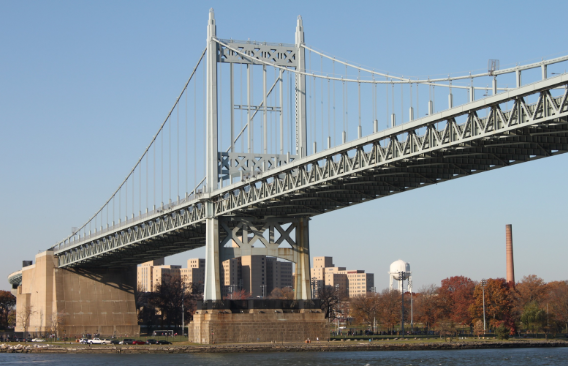
By Alfonso Abreu
Over the course of two days, October 6-7, the Metropolitan Transportation Authority (MTA) held two public hearings to discuss the safety of the city’s bridges and tunnels. The goal was to improve safety on the roadways, focusing on controlling speed in work areas and making sure the infrastructure is in good condition.
The MTA said to ensure the structure has a long lasting future, it would introduce weigh-in-motion (WIM) technology on the Robert F. Kennedy (RFK) bridge, which weighs trucks as they approach the bridge to flag any that are too heavy for the bridge’s infrastructure.
David Gmach, the Director of Strategy and Stakeholder Engagement at MTA Bridges and Tunnels, led the hearing. As the RFK bridge reaches its 90th year since construction, practices to ensure it’s longevity must be put in place. It was originally called the Triborough bridge because of its connection between the three boroughs (Manhattan, Queens, and the Bronx).
Currently, MTA is spending more than $7 million to repair damages done to the RFK bridge. As reported by MTA’s Bridges and Tunnels, 6.5% of the trucks traveling on their bridges are overweight. These repairs cost the MTA’s Bridges and Tunnels institutions a total of $30 million annually.
Gmach detailed how WIM will work. “You start with the signage that will be posted before the bridge about the weight restrictions and the use of wind. Vehicles then pass over the roadway
sensors as shown in the photo which serve to weigh the trucks.” Gmach continues, “Third, the cameras capture identifying information. And this roadway system will undergo a daily self- test and semiannual calibration to confirm accuracy.”
The MTA detailed the weight limits they have in place. The weight restriction is 80,000 lbs. If the truck weighs more than 10% over the 80,000 lbs weight limit (88,000 lbs) than the truck is in violation. If in violation, warning letters will be mailed to drivers. After multiple warnings a fine of up to a maximum of $1,200 will be issued. Gmach stated that 20% of the funds collected will go to the city of New York and 80% will go to the MTA Bridges and Tunnels.
Another issue according to MTA’s Bridges and Tunnels is the amount of speeding accidents, specifically in work zones. According to the MTA, almost 900 fatalities and 40,000 injuries occurred in U.S. work zones back in 2023. Gmach detailed how they will enforce a work zone speed. “Radar and cameras are mounted on a designated vehicle, and this vehicle can be moved from location to location as needed. The radar identifies any vehicle traveling 10 miles per hour faster than the posted speed limit within the work zone. The camera captures photos of the speeding vehicle and marks the time.”
Gmach detailed the fines in place in case of a violation. “There’s a 90-day warning period before fines are issued. Any vehicle that exceeds the posted speed limit by more than 10 miles an hour will receive a violation. The first violation is for $50. If a second second violation is committed during the 18-month period following the first violation, the cost is $75. And then the third and every other violation within the 18-month period of the first violation is $100.” In terms of distributing the funds, it will be the same as the weight limit violations, with 20% going to the city and 80% going to the MTA’s bridges and tunnels.
The safety procedures are currently in effect in New York state, and as of this year it will be in effect in New York City.
